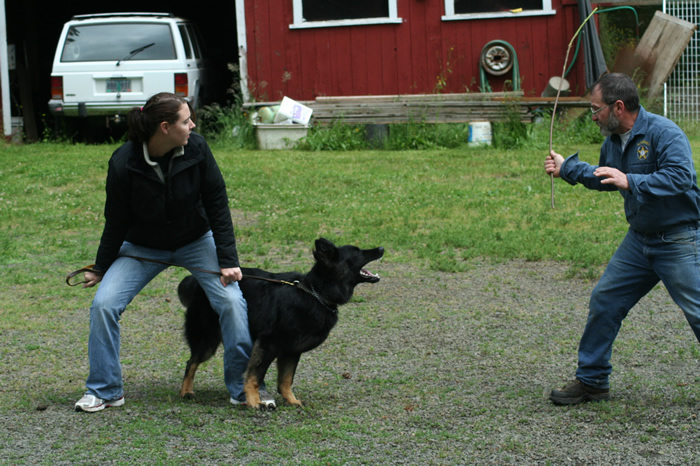
Schilling’s Northwest Law Dogs offers an intense protection dog training program. All dogs that have completed the obedience course at Schilling’s are eligible to enroll in the protection course.
The protection classes are an exciting way to give your dog an excellent workout, and have the additional benefit of having a well-trained protection dog. Both the owner and dog are encouraged to participate in the training.
Protection courses give both the dog and owner confidence, and can lead into a fun hobby. Students of Ken Schilling (SOKS) is a competitive club that travels around the United States to various dog shows that hold protection competitions. Schilling’s even hosts competitions of their own.
If requested, strict confidentiality will be honored.
Take a 16 Week Protection Class
WHAT IS A PERSONAL PROTECTION DOG?
An Analysis by Wendy M. McCoy (1995)
What is the first thing that comes to mind when you hear the words “personal protection dog”
- An attack dog?
- An aggressive dog?
- An unpredictable dog?
- An unfriendly dog?
- A mean dog?
- An untrustworthy dog?
- A dangerous dog?
- A dog not good with children?
The list goes on and on, but all of those negative qualities previously mentioned — and many more — are just the opposite of what a good, well-trained personal protection dog displays. Following are some of the attributes one can expect from a well-trained personal protection dog:
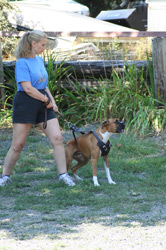
1) A personal protection dog must, first and foremost, be an obedient dog. Great emphasis is placed on instilling obedience before any advanced protection training has commenced and obedience training continues to be an integral part of a personal protection dog’s training. In general, a personal protection dog is, ultimately, more obedient than a dog that has only gone through basic obedience training because it is challenged to react in a wider variety of real-life situations.
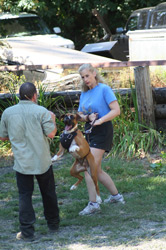
2) A personal protection-trained dog is not an aggressive dog. A common misconception people have about aggressive dogs is that they are brave or “tough”. This is simply not true. A greater majority than you might think appear aggressive out of fear; hence the term “fear-biter”. These dogs usually bark and growl uncontrollably. When a dog is in a panic, it does not have the presence of mind to assess a situation or even listen to its handler. Much of the time even basic obedience training will not alter this behavior. An important part of personal protection training is to build the dog’s confidence. A confident dog does not need to continue barking and growling if it is assured by its handler that the situation is under control. Once a dog begins to gain confidence, a noticeable change will be present. The dog will seem to learn more quickly and retain more of what it has learned due to the fact that the dog’s brain is not clouded with fear — it has more capacity to store and retrieve information.
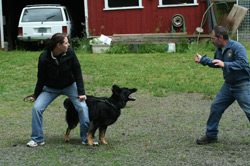
3) The term “attack dog” is more appropriately synonymous with “junk-yard dog.” This type of dog lives for the chance to attack — anything. A personal protection dog lives to be with its handler. A personal protection dog defends, but does not go out looking for something to assault. The skills of a personal protection dog are developed to contend with an attack or threat of attack with the minimum amount of force necessary: bark and warn the “bad guy” to stay away first; engage only if the threat continues/increases or if instructed to do so by the handler.
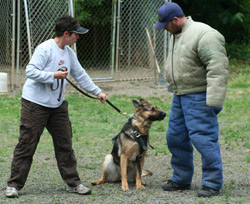
4) Personal protection dogs are trained to understand that any aggression they may need to project in a dangerous situation MUST be controlled aggression. It may appear to the untrained eye that the dog is trying to rip a perpetrator’s arm out of its socket when, in reality, the dog is simply doing all it can to maintain physical contact with the “bad guy” until the handler indicates it is safe to let go. Upon hearing the “release” command, the dog will let go of the person’s arm, but remain focused and alert.
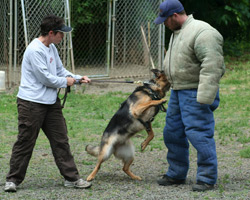
5) Any “aggression” demonstrated by a personal protection dog is only a response to provocation. That is why these dogs are neither unpredictable nor untrustworthy. The only time the personal protection-trained dog shows aggression is when danger is perceived. An extensive part of the dog’s training is teaching it to distinguish between real danger and an everyday situation, such as a jogger or bicyclist heading toward you or a friend giving you a hug.
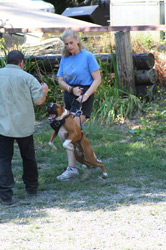
6) Many people believe that, in order to be a formidable protector, a dog needs to be unfriendly. This is unequivocally not true. One way a dog becomes unfriendly and even dangerous is when it has been teased or harassed. Personal protection dog training is not done by either of these methods. It is done with a positive approach in which the dog is kept happy and comfortable, not fearful and uneasy. Personal protection dogs do not have a fear or hatred of people. On the contrary, they are confident, intensely alert, and people-oriented. In fact, the ideal personal protection dog is friendly and social and able to abide all kinds of life; from lizards to livestock and birds to bull moose. After all, if a personal protection dog is not mannerly and social, it will not be able to accompany its handler — and it cannot protect the handler if it is not with the handler.
7) A common misconception is that personal protection dog training is synonymous with “Schutzhund” training. Although Schutzhund training does include protection training, it is a sport and — just like Agility or Obedience — it is a means to obtain a title on a dog. Although he is quite competent in this area as well, Ken Schilling offers training which concentrates on preparing a dog to deal with actual situations and real-life encounters.
Although these are only a few of the positive rewards you can expect from a personal protection-trained dog, I hope I have dispelled some of the myths and mysteries surrounding the ominous title of “Personal Protection Dog”.
